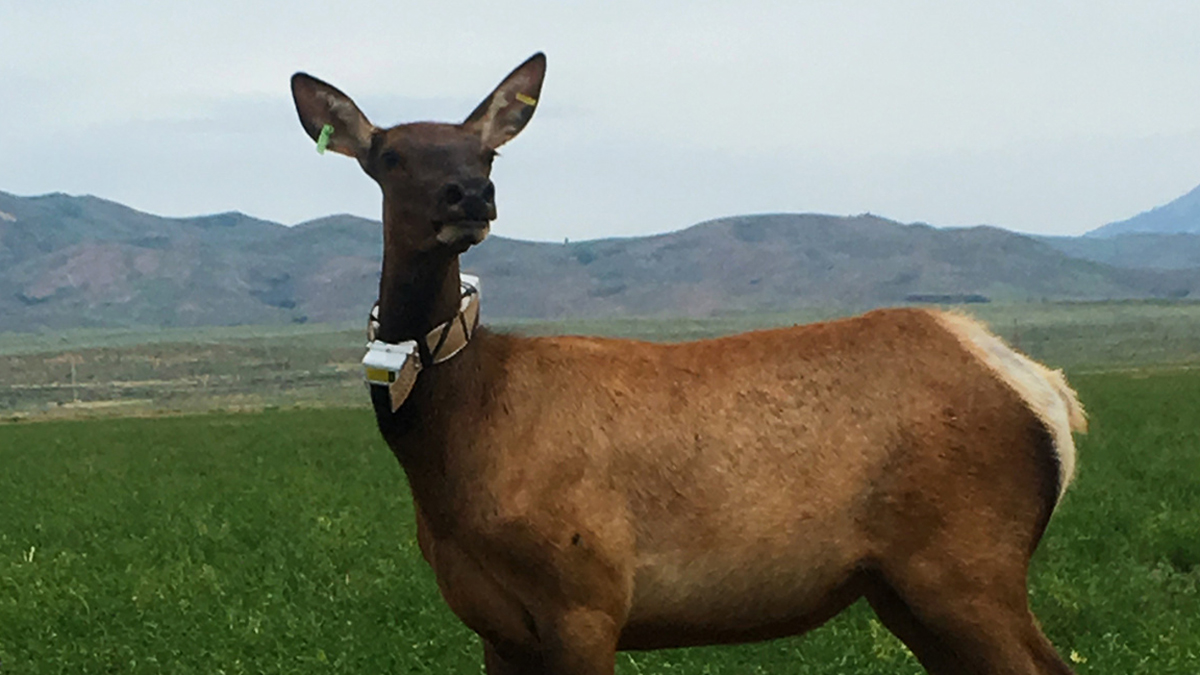Below is a news release from the Idaho Department of Fish and Game.
Over the last several years biologists with Fish and Game have been applying consistent deterrents to local big game herds in an effort to keep them from damaging crops on private property. In some locations across the Magic Valley Region these deterrents, which include non-lethal and lethal actions, are resulting in reduced levels of crop damage. Department staff are continuing night patrols of known depredation hot spots across the region to insure a consistent effort to keep big game animals off agricultural crops.
Providing hunting opportunity through depredation hunts
Since late July the Department has established five depredation hunts for elk and one depredation hunt for deer using hunters to help change big game behavior while reducing the number of depredating animals. These hunts have occurred across the Magic Valley.
The landowner and Fish and Game equally allocate tags for depredation hunts, which are typically very small numbers. If a depredation hunt occurs in a Game Management Unit where a controlled hunt is scheduled, Fish and Game will randomly select hunters who hold a controlled hunt tag within that unit.
Fish and Game has issued 11 kill permits to landowners, allowing them to take elk that are causing damage to their crops. One kill permit has been issued for deer. To date, landowners have harvested six antlerless elk and no deer.
Two managed elk hunts have occurred in the region which provided opportunity for six hunters to assist with depredation mitigation efforts on two properties in the north half of the region. As with depredation hunts, the tags are split equally between the landowner and Fish and Game, with the Department randomly selecting hunters with an existing antlerless controlled hunt tag in that Game Management Unit.
Since late July, Department sharpshooters have removed 41 elk on properties in the Little Camas and Camas Prairie region, of which 37 were antlerless and four were spike bulls.
All elk were processed in the field and immediately placed in a refrigerated truck where the quarters were frozen within hours of harvest. The meat has been delivered to a local meat processor. All meat will be donated to Idaho Hunters Feeding the Hungry who will distribute the meat to area food pantries across the Magic Valley.
Trapping and translocating elk
Fish and Game will begin a trapping and translocation project in mid-October in an effort to reduce the size of the chronic depredating elk herd in the Little Camas region. Trapping is expected to occur during two time periods: early fall of 2020 and early spring 2021. Trapping elk at these times will help ensure that these elk are those that have learned to depredate on local crops. The goal is to translocate up to one-third, or approximately 100 antlerless animals total between the fall and spring capture efforts, from the depredating herd.
Trapping and translocating elk is both dangerous and stressful on elk and the Fish and Game staff who will be conducting the operation. While every effort is made to minimize stress to the captured elk, there will undoubtedly be individual elk that will die due to capture related activities. Any elk that die during the translocation effort will immediately processed and all meat will be professionally processed and donated to Idaho Hunters Feeding the Hungry.
Elk will be trapped using a corral trap with very long “wings” which will funnel elk into the trap. The elk will be driven into the trap via a helicopter.
It is anticipated that trapping will occur over several days due to capacity of the trap as well as limitations of paneled livestock trailers to move elk. Once trapped, all elk will be tested for brucellosis following U.S. Department of Agriculture and Idaho State Department of Agriculture protocols prior to release in central Idaho. Elk that test positive for brucellosis will be euthanized.
For more information, contact the Magic Valley Regional Office at (208) 324-4359.
(Photo source: Idaho Department of Fish and Game)
